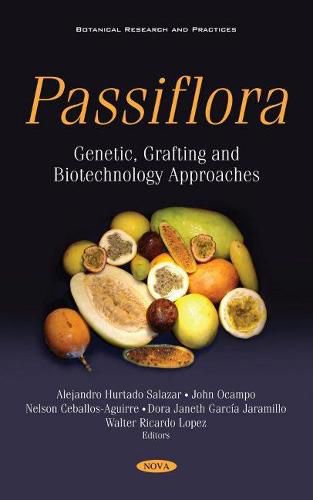Readings Newsletter
Become a Readings Member to make your shopping experience even easier.
Sign in or sign up for free!
You’re not far away from qualifying for FREE standard shipping within Australia
You’ve qualified for FREE standard shipping within Australia
The cart is loading…






The diseases are among the main factors responsible for the low productivity and losses in commercial passion fruit crops. Among the agents that cause pathologies, Fusarium oxysporium S, Fusarium solani Sacc and Phytophora spp., deserve attention. The use of tolerant cultivars stands out as one of the most effective, economic and ecological measures in the control of the disease. In the case of passion fruit, this strategy is essential based on the high susceptibility of current cultivars. Fusarium spp normally compromises the efficiency of the root system, as well as the conductive vessels of the sage, reducing the longevity of the plant and limiting the use of the areas contaminated by the fungus. Tolerance to F. solani was found in Passiflora gibertti N.E. Brown, P. nA tida Kunth, P. macrocarpa Mast, P. quadrangularis L., P. setacea L., P. alata Curtis and P. caerulea L., presenting grafting with the use of tolerant species a viable alternative to attenuate the problems caused by this fungi. Thus, with the use of tolerant wild species as rootstocks, it allows coexistence with premature death of plants and provides the formation of healthier and uniform crops. However, there is little information on the effect of wild Passiflora species such as passion fruit rootstock.
$9.00 standard shipping within Australia
FREE standard shipping within Australia for orders over $100.00
Express & International shipping calculated at checkout
The diseases are among the main factors responsible for the low productivity and losses in commercial passion fruit crops. Among the agents that cause pathologies, Fusarium oxysporium S, Fusarium solani Sacc and Phytophora spp., deserve attention. The use of tolerant cultivars stands out as one of the most effective, economic and ecological measures in the control of the disease. In the case of passion fruit, this strategy is essential based on the high susceptibility of current cultivars. Fusarium spp normally compromises the efficiency of the root system, as well as the conductive vessels of the sage, reducing the longevity of the plant and limiting the use of the areas contaminated by the fungus. Tolerance to F. solani was found in Passiflora gibertti N.E. Brown, P. nA tida Kunth, P. macrocarpa Mast, P. quadrangularis L., P. setacea L., P. alata Curtis and P. caerulea L., presenting grafting with the use of tolerant species a viable alternative to attenuate the problems caused by this fungi. Thus, with the use of tolerant wild species as rootstocks, it allows coexistence with premature death of plants and provides the formation of healthier and uniform crops. However, there is little information on the effect of wild Passiflora species such as passion fruit rootstock.